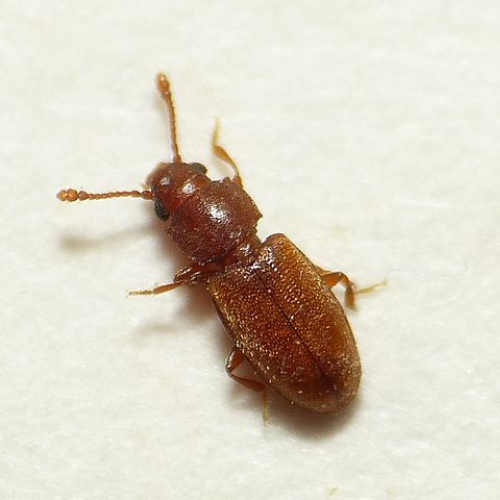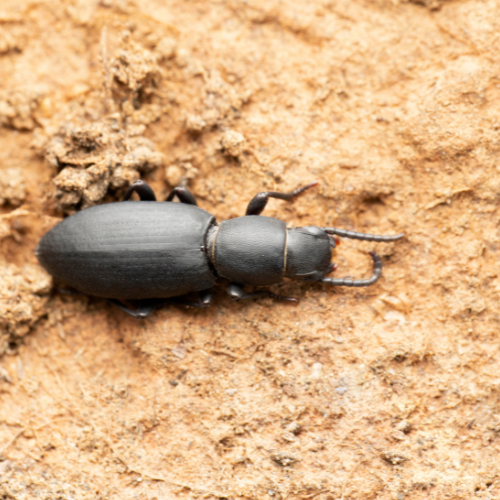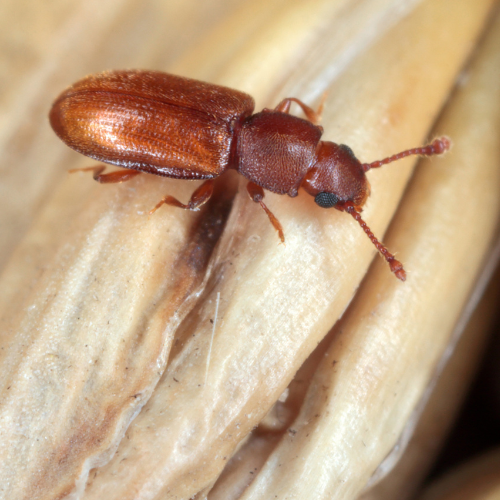Merchant Grain Beetle
Introduction to
The merchant grain beetle, scientifically known as Oryzaephilus mercator, is a common pest found in stored food products. These small beetles can infest a variety of dry goods, including grains, cereals, nuts, and dried fruits, causing significant damage and contamination. Understanding how to identify, prevent, and professionally manage merchant grain beetles is essential for protecting food supplies and maintaining a pest-free environment. This article explores the recognition, biology, habits, prevention, and professional handling of merchant grain beetles.
Recognition
Merchant grain beetles are small, flat, and elongated insects, measuring about 2.5 to 3 millimeters in length. They are dark brown with six saw-like projections on each side of their thorax, giving them a distinctive appearance. These beetles have clubbed antennae and well-developed wings but are not known to fly. The larvae are yellowish-white with a brown head and can grow up to 3 millimeters long. Signs of an infestation include the presence of adult beetles, larvae, and their shed skins in stored food products. Infested food may also have a musty odor and show signs of contamination.
Biology
Merchant grain beetles belong to the family Silvanidae and have a life cycle that includes egg, larva, pupa, and adult stages. Females lay their eggs in or near food sources, and a single female can lay up to 300 eggs during her lifetime. The eggs hatch into larvae, which feed on the infested food for about two to four weeks. After feeding, the larvae pupate, and adults emerge in about a week. The entire life cycle can be completed in as little as 25 days under favorable conditions, leading to rapid population growth in stored food products. Merchant grain beetles are particularly problematic in warm and humid environments.
Habits
Merchant grain beetles are commonly found in stored food products, where they feed on a wide variety of dry goods. They are often introduced into homes and businesses through infested food packages. These beetles prefer foods that are high in fat and oil content, such as nuts, seeds, and chocolate, but they can also infest grains, cereals, and dried fruits. Merchant grain beetles are highly mobile and can quickly spread from one food source to another. They are most active in warm temperatures and can survive in a range of environmental conditions, making them a persistent pest in food storage areas.
Prevention
Preventing merchant grain beetle infestations involves proper food storage and regular inspections. Store dry goods in airtight, pest-proof containers made of glass, metal, or heavy plastic. Keep storage areas clean and free of food debris, and regularly inspect food packages for signs of infestation before bringing them into your home or business. Rotate food supplies to ensure older products are used first, and avoid buying food in damaged or compromised packaging. Maintain a cool, dry environment in food storage areas, as merchant grain beetles thrive in warm and humid conditions. Consider using pheromone traps to monitor for beetle activity.
Professional
If you suspect a merchant grain beetle infestation, professional pest control services can provide effective solutions. STL Pest Control offers comprehensive treatment plans to manage and eliminate merchant grain beetle infestations. Their experienced technicians will conduct a thorough inspection to identify infested areas and apply targeted treatments to eradicate the beetles. They use safe and effective methods, including insecticides and integrated pest management strategies, to ensure long-term control. Additionally, STL Pest Control provides advice on preventive measures to keep your food storage areas beetle-free. Professional intervention ensures that infestations are resolved quickly and efficiently, protecting your food supplies and property.



Our Office









